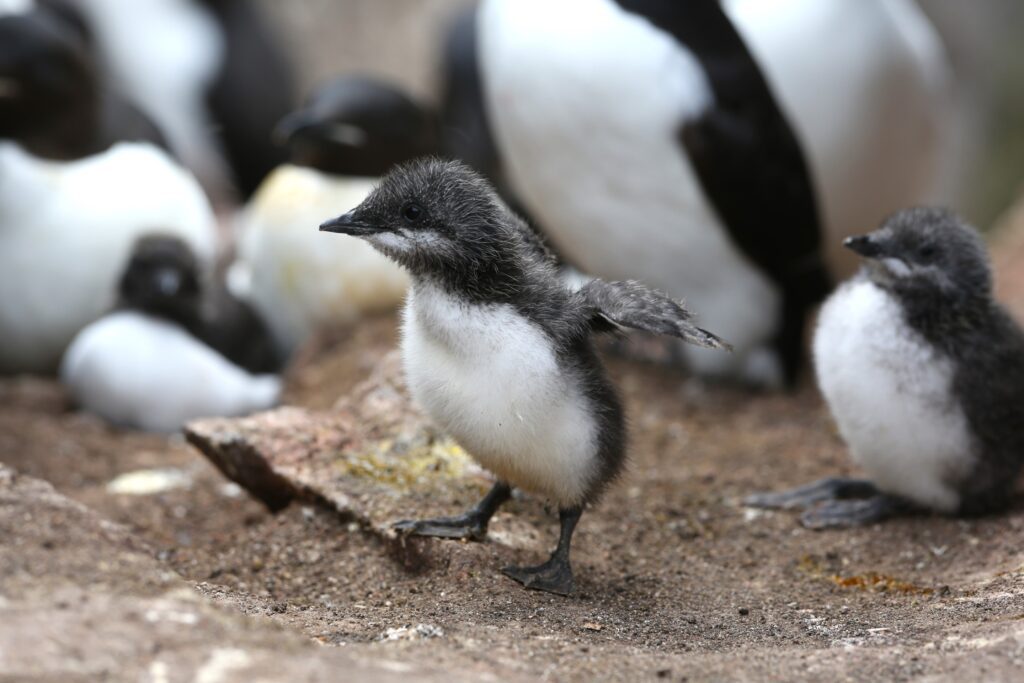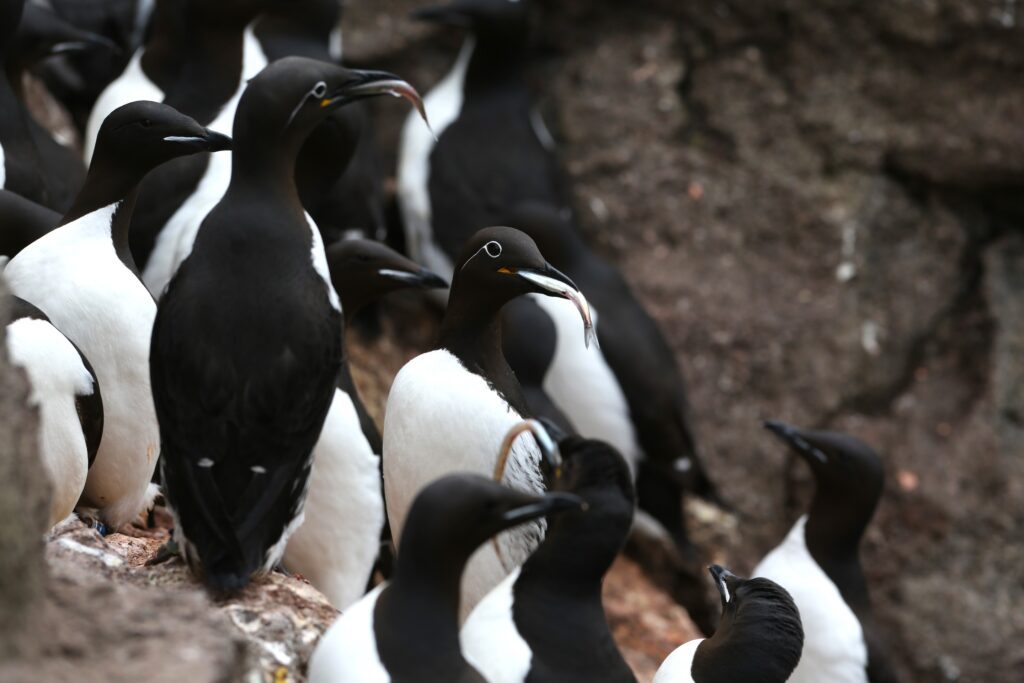Foraging range relates to colony size
Using tracking data from guillemots (Uria spp.), researchers have confirmed the 60 year-old theory that the length of seabird foraging trips increases with the size of the colony due to intraspecific competition for food. The study included 29 guillemot colonies in the North Atlantic, and the results of it highlights a weakness in current marine nature management.
Many mouths to feed
Density-dependence and intraspecific competition have long been considered important factors controlling the population dynamics of colonial animals. Philip Ashmole proposed that as seabird colony size increases, competition for food around colonies also increases, forcing breeding adults to spend more time and energy to find prey farther from the colony. Seabird colony size often varies over several orders of magnitude within the same species and can include millions of individuals per colony. As such, colony size likely plays an important role in determining the individual behaviour of its members and how the colony interacts with the surrounding environment.
Tracking data reveals a strong relationship
Using tracking data from common and Brünnich’s guillemots, the world’s most densely breeding seabirds, a group of international researchers have shown that the distribution of foraging-trip distances is indeed a function of colony size during the chick-rearing stage, consistent with Ashmole’s halo theory. This pattern occurred across colonies varying in size over three orders of magnitude and distributed throughout the North Atlantic region. The strong relationship between colony size and foraging range means that the foraging areas of some colonial species can be estimated from colony sizes, which is more practical to measure over a large geographic scale.
Few foraging areas are protected
Two-thirds of the North Atlantic populations of common and Brünnich’s guillemots breed at the 16 largest colonies. By extrapolating the predicted foraging ranges to sites without tracking data, the researchers were able to show that only two of these large colonies have significant coverage as marine protected areas. The results of this study are an important example of how theoretical models, in this case Ashmole’s version of central-place-foraging theory, can be applied to inform conservation and management in colonial breeding species.
Read the article:

Photo © Marion Lexau Nødseth

Photo © Marion Lexau Nødseth
Contact person SEAPOP: Sébastien Descamps, Norwegian Polar Institute
